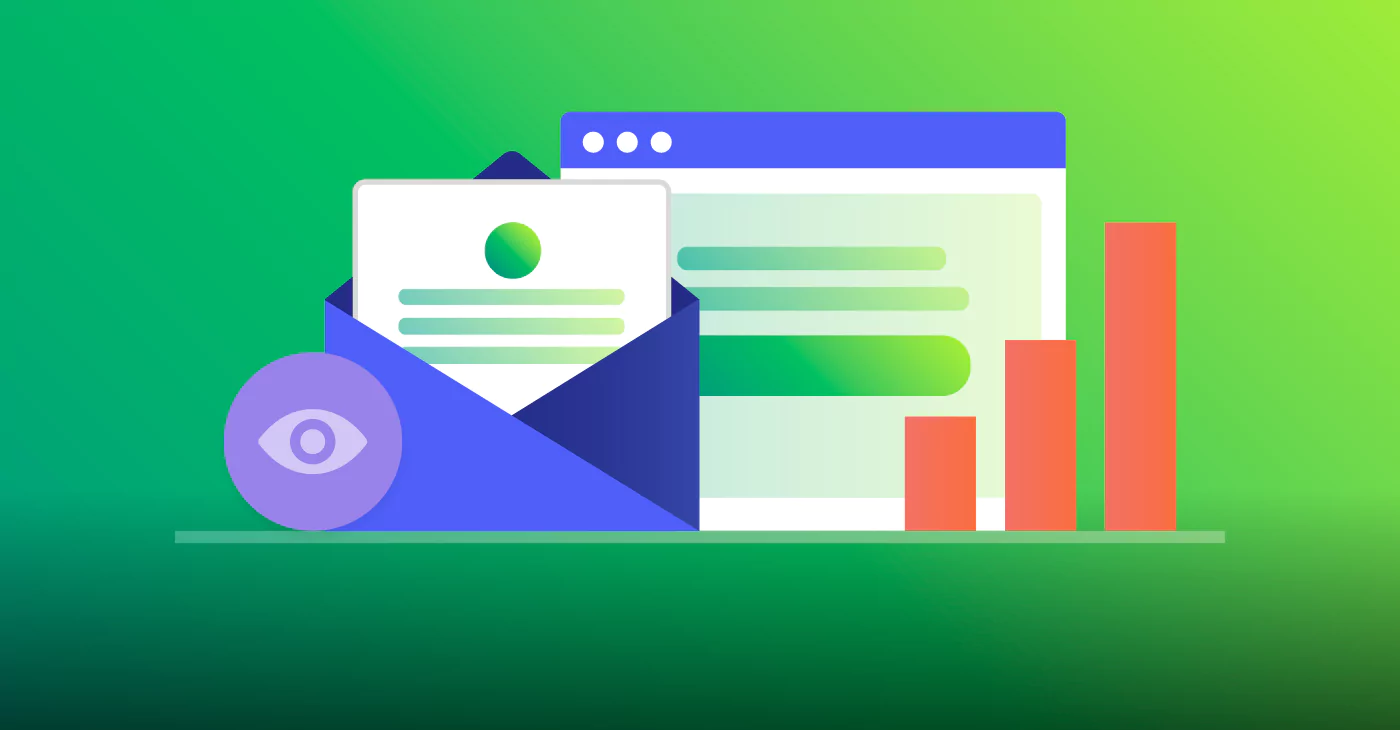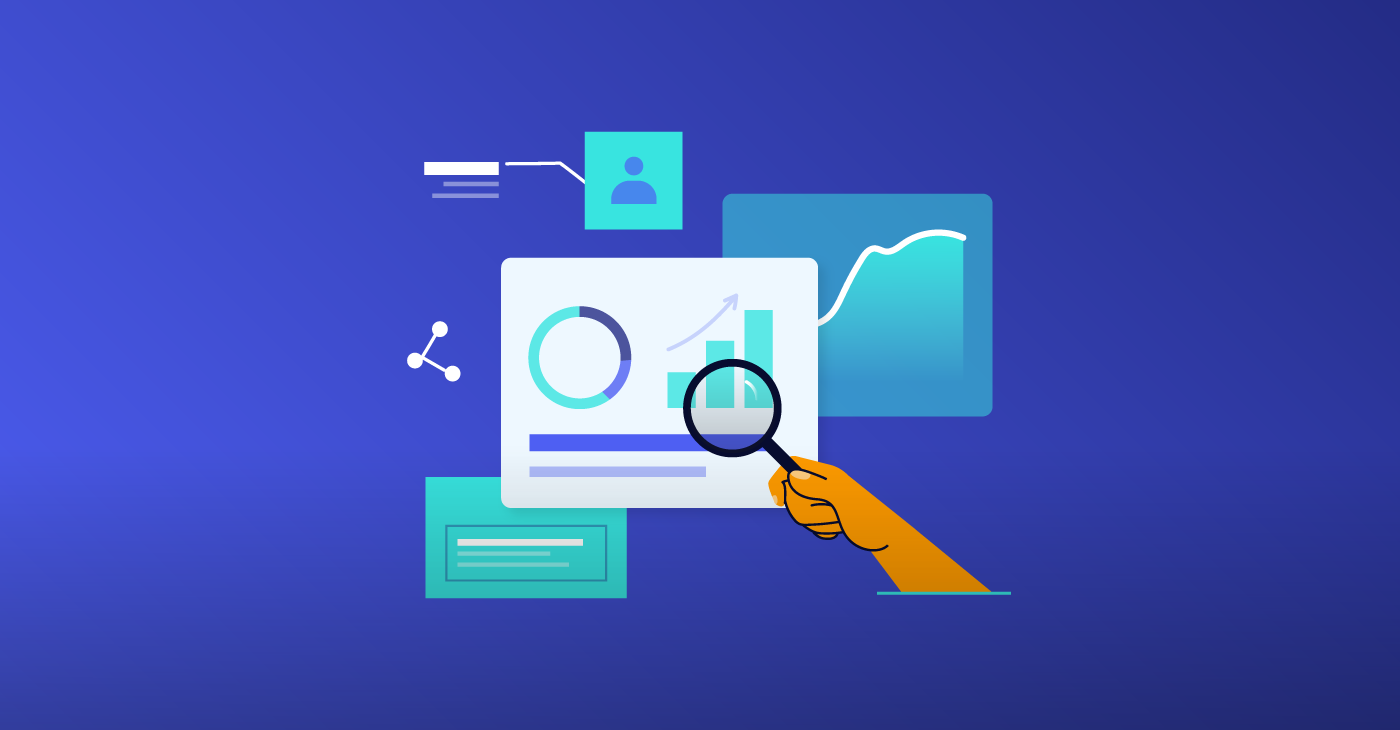
Webinars can help you to generate qualified leads, educate customers, facilitate onboarding processes, and foster partnerships and collaborations. However, to achieve the desired results, you need to promote your webinar to get a good number of attendees.
In this guide, we’ll show you how to use email marketing to convince people to sign up for and attend your webinar. Whether you’re targeting your subscribers or a list of people who are less aware of your brand, we have got you covered. Our three-step process covers how to effectively promote a webinar by creating persuasive email copy, using the correct segmentation to send out emails, and tracking email performance.
Step 1: Create the Promo Copy
The promo copy refers to the content of the webinar promotion email. It consists of the email subject line, body text, call-to-action (CTA), images, and videos. All these materials should align with the common goal of getting your target audience hyped up for the webinar.
Here’s how to ensure each part of the copy is beneficial to your webinar promotion:
Email Subject Line
The email subject line influences whether or not the recipient will open the email. In fact, 47% of email recipients open the email based on the subject line. For this reason, if you want to pique the recipient’s interest and encourage them to read your email, the subject line has to be on-point.
Make sure the subject line conveys your webinar’s main agenda using the fewest words possible. Ideally, the subject line should be less than 50 characters so that it renders perfectly on mobile devices. Besides that, create personalized subject lines: adding the recipient’s name in the subject line can increase open rates by 16%.
Other tips for creating compelling and successful subject lines include:
- Play on the subscriber’s emotions — highlight their pain points and promise to deliver the best solution
- Use benefit-based language — show clearly the value they’ll gain if they attend the webinar
- Avoid words that are known to trigger spam
- Lead with action words, where possible
Email Body
Once you’ve crafted a great subject line, you’ve hopefully convinced the recipient to open your email. Next, you should provide more details to promote the webinar. Preferably, the email body should include a list of the points or areas the webinar will cover. This is important as it helps the invitee pick the most important details to decide whether or not the webinar is relevant to them.
Besides that, provide details about the webinar speakers. Information such as the speakers’ personality, background, photos, achievements, and more inspires the invitee and may be critical when it comes to securing their attendance. Check how Omniscient Digital adds information about the webinar speakers.
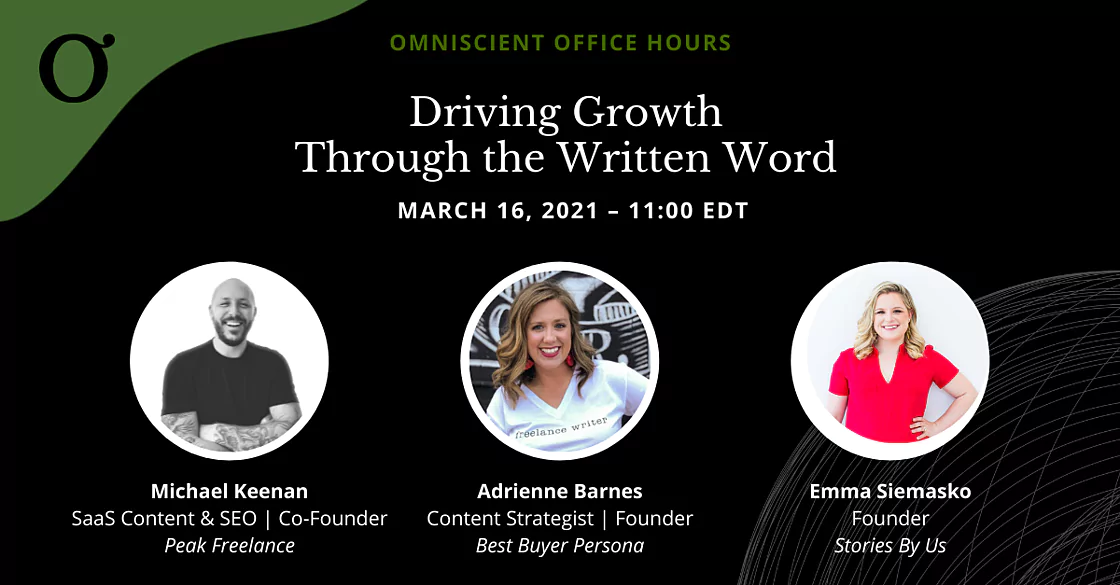
Lastly, the body should include a conspicuous CTA. The rule of thumb is to make the CTA button stand out against the rest of the email so that it’s easier to find for the invitee. Moreover, it should display a simple and direct command such as “join the guest list” or “register now.”
Asana has perfected the art of webinar emails. We like how their CTA uses a different color from the rest of the email to make it eye-catching.
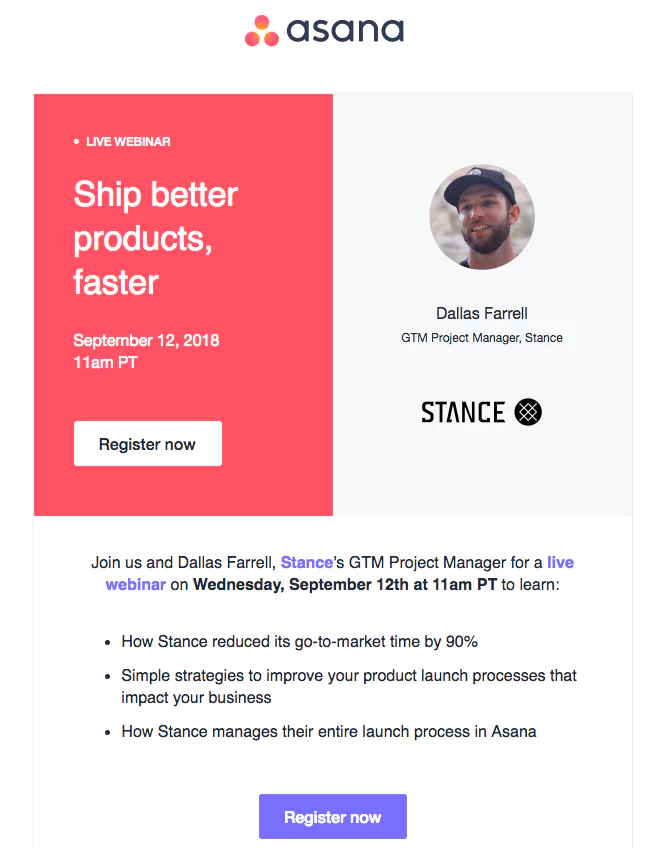
Email Design
The email design and the color palette also matter when it comes to webinar promotion. A good design should match your brand style and color schemes. Besides giving your brand a spotlight, it should also include white space and create a natural flow for the reader to easily navigate through the content.
Moreover, you should consider whether the overall design makes it easy for the reader to find the CTA button. The Asana email above has done that so perfectly.
Step 2: Send Out The Emails
Once you have created the copy, the next step is to send out the emails. When it comes to sending webinar emails, three things are important: segmentation, timing, and frequency.
Email Segmentation
Email segmentation increases open rates, and it’s easy to understand why. Not everyone on your list is a target audience for your webinar.
For example, let’s say you’re an email marketing software provider. Your list could include agencies, freelancers, in-house marketers, etc. If you set up a webinar entitled “Growing Your Agency Using Email,” then it probably wouldn’t be relevant to everyone on your list. You would have to segment your list to ensure that your invitees were agency owners.
Segmenting your list ensures that you get signups from people for whom the webinar would be genuinely relevant, thus increasing the chance of generating highly qualified leads.
Timing
You also have to time your email series effectively as you promote your webinar. Take, for example, the initial announcement email. If you send it out just a couple of days before the event, a huge chunk of potential leads may fail to find a slot in their schedule to attend. Remember: many of your desired attendees are busy professionals, and you should give them ample time to reorganize their schedules to accommodate a webinar.
On the other hand, don’t send out the invitation too early. If the invitation comes in too far in advance, the attendee may forget about the webinar. Besides, some leads may fail to register because they are uncertain of how their schedules will look in the future.
Frequency
Don’t send out the pre-launch email and expect to get a maximum number of attendees. The most successful webinar promotion strategy requires a series of emails. But how often should you send out emails about the webinar?
- Pre-launch or initial announcement email: The goal of the introduction email is to generate hype around the webinar. Ideally, you should send the email about 2-3 weeks before the webinar. Here’s an example of a pre-launch email:
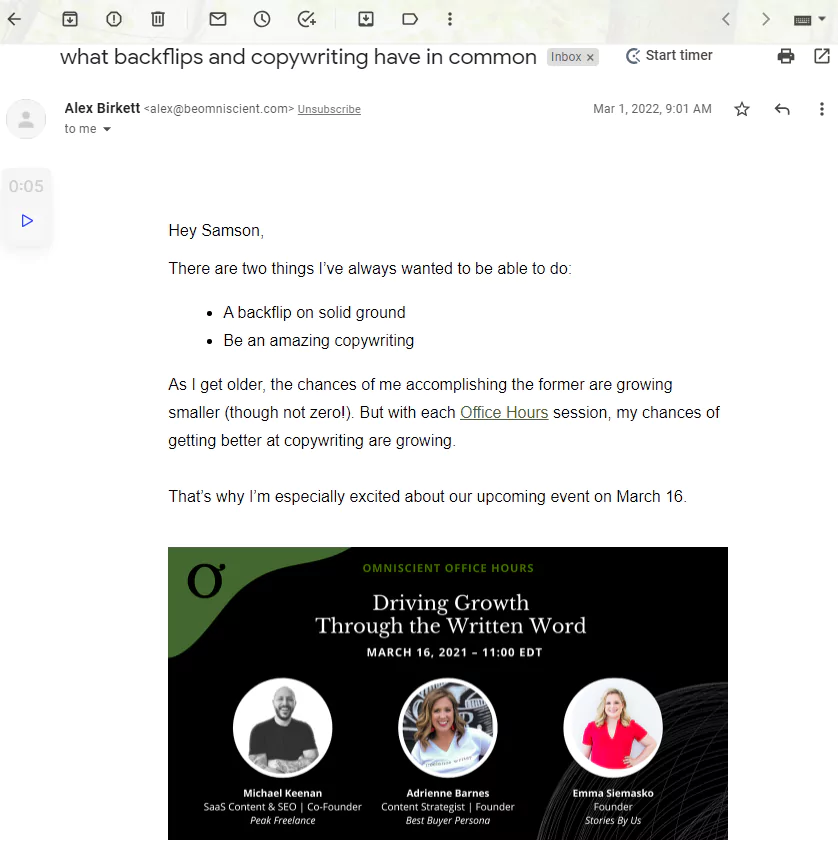
- Signup and registration email: The signup email formally invites the recipient to the webinar. It should highlight the value: why should the attendee set aside 30 or 60 minutes of their time to listen to you and other speakers? Omniscient digital sends the invite seven days after the first email.
- Invitation reminder: Some invitees will sign up after the pre-launch and signup email, whereas others won’t. You should send the invitation reminder to those that didn’t sign up, just in case the invitation got buried in their inbox. Ideally, you should send the reminder within a week of the webinar.
Keep in mind that you might have to send several reminders depending on when you sent the invitation and when the webinar is. This is also the best time to share a video featuring a sneak peek of the webinar. The video excerpt can get the invitees fired up about registering.
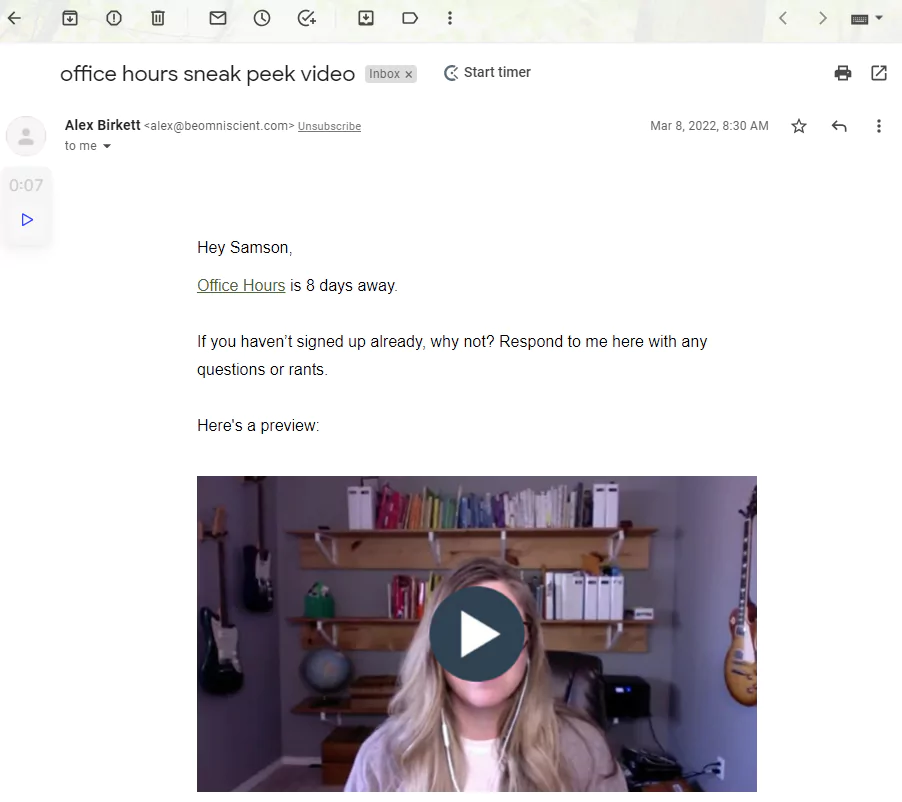
- Signup Autoresponder: You should also set up an autoresponder to let attendees know that their registration has been successful. The confirmation email should arrive in the subscriber’s inbox a few minutes after they sign up. The email should contain details about the webinar, such as the date, time, webinar ID, and passcode.
- Webinar reminder: Not all attendees will mark the event in their digital calendar. To ensure the event doesn’t slip their mind, you should send them a reminder to reiterate the date, time, and how to join the webinar. Some people send the webinar reminder a day before the event, but it’s also okay to send the reminder an hour before the event.
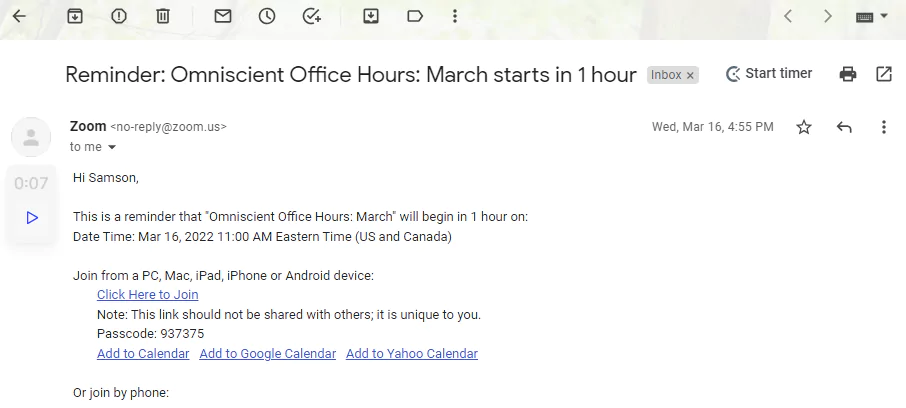
- Webinar Recap: Interestingly, not all signups will turn up for the webinar. Some will miss the event for reasons beyond their control but might be interested in gathering the knowledge shared during the webinar. On the other hand, some attendees may be interested in returning to the content to better understand a point they didn’t get the opportunity to consider fully during the webinar.
A webinar recap email serves to meet all of these needs. It provides a summary of what was covered and gives recipients an option to get resources such as webinar recordings, slides, and links to similar blogs.
Step 3: Track Performance
Every webinar you hold is a learning curve and an opportunity to better your webinar promotion strategy. For this reason, you should track performance at every step of the webinar journey. Some of the things to track include the number of signups, number of attendees, and qualified leads generated. These performance indicators may serve as benchmarks for future webinars.
Are you ready to plan a webinar? We’d love to help. Benchmark Email provides all you need to create beautiful email templates, track your results, and improve your future campaigns. Sign up for a free account to get started!





